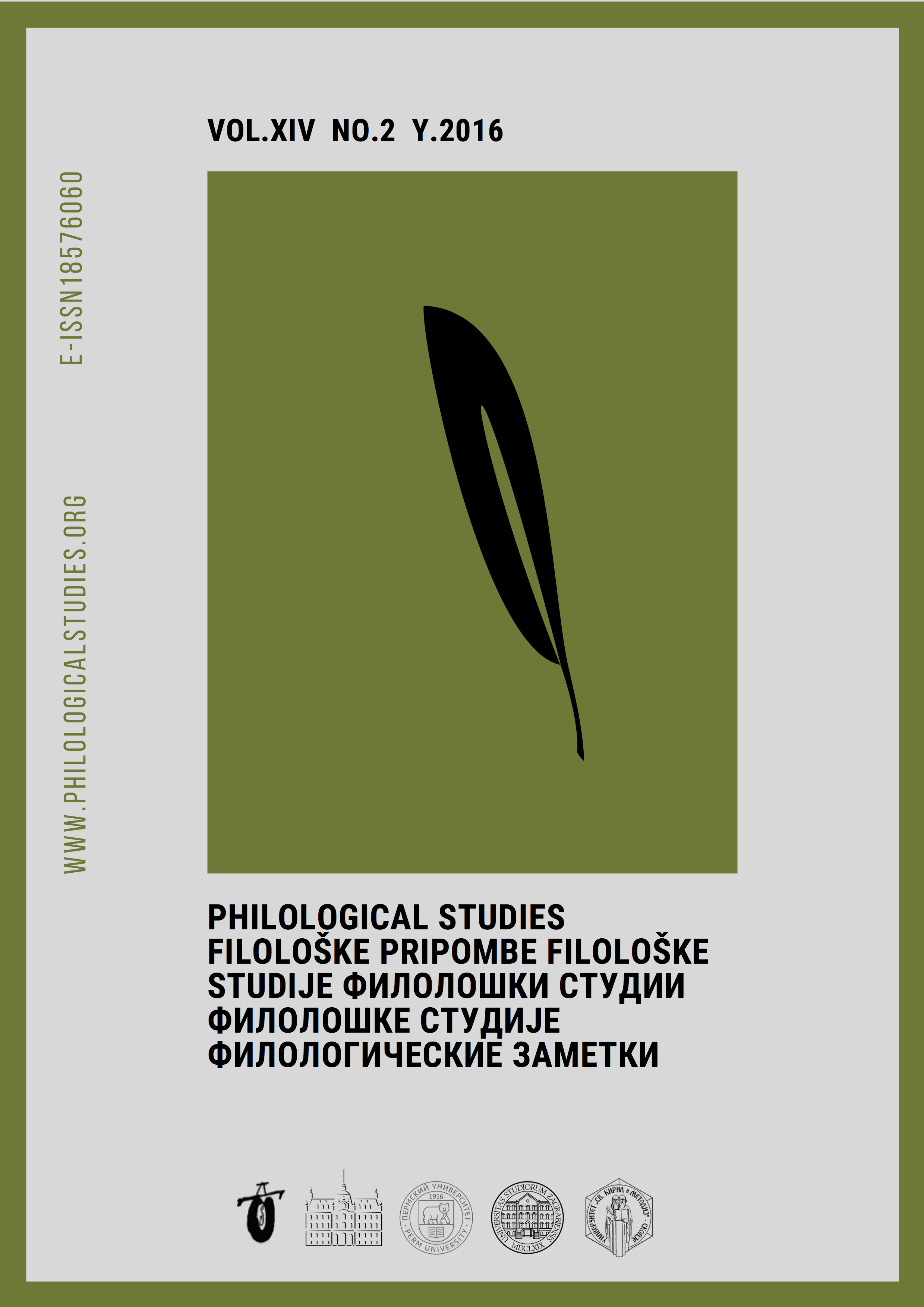ANALYSIS OF SECONDARY METAPHORICAL NOMINATION IN THE RUSSIAN AND CHINESE LANGUAGES IN TERMS OF GENDER
Keywords:
Metaphorical nominations, gender semantics, comparative analysisAbstract
In the paper there was used the method of comparison of the original metaphors in Russian and their translation into Chinese. This method is concerned as traditional one, because during its usage we compare metaphors of the original text and their translation into another language. This comparison allows to reveal the facts of metaphorical images parallelism and simultaneously to show that some metaphorical meanings cannot be translated literally into another language, which is the evidence of existence of differences in the metaphorical models of this two languages. Analysis in terms of gender semantics has shown that most of metaphorical nominations have an ambivalent character, i.e. can be applied both to a man and a woman.
Downloads
Downloads
Published
Issue
Section
License
Philological studies © 2019. This work is licensed under a Creative Commons Attribution-Noncommercial-No Derivative Works 3.0 Unported License


